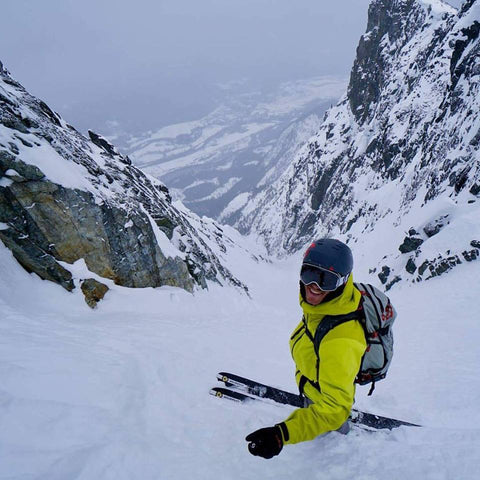Top five tips to improve your ski technique this winter
Ben Darlow has been a ski instructor and trainer in many places around the world, and is now living in Whistler, Canada.
Ben has been teaching in Whistler since 2007 and is part of their Demo team, having also been a member of New Zealand’s NZSIA Demo team at Interski 2015.
Today, Ben teaches private lessons, and has over 20 winters under his belt.
We couldn’t think of a better instructor to speak to, to get some insight into how to improve ski technique ahead of the new season. Here’s some quick tips to help you fine tune your skiing skills…

Feel your feet
The most important thing in skiing is stance and balance. The number one thing I say to my guests is you need to feel the bottom of your feet in the ski boot.
Everything starts from your feet up, and making small adjustments with your foot and ankle inside the boot, will make a big difference to your skiing (see “Mobility” tip below).
If you can feel the arch of your foot in the boot, it will help you move from edge to edge more effectively, turning with the feet first, as opposed to the upper body.
Outside ski
Too often people have been told to stand on the downhill ski, and take that to heart. While this concept is not wrong, it often causes them to be late finding balance in the next turn. I have a lot more success with guests when they start to think of balancing over the outside ski instead. This allows you to be controlled and balanced right from the start of each turn.
Try experimenting with how early you can shift the weight to the new outside ski, being careful not to stand “up onto” it. If you can find the balance at the start of each turn you will have a lot more success being able to turn with the legs and control the pressure along the edge of the ski.
Tip to tail
The biggest thing that prevents people from enjoying anything other than perfectly groomed runs is not skiing with the tail following the path of the tip. When you ski by pushing the back of the skis out to change direction it can feel great when the snow is perfect, but if it gets a little icy or lumpy suddenly skiing is not nearly so fun.
On a gentle slope to start with, try simply thinking about smoothing your turn out by skiing down the hill a little more so that the tail follows the path that the tip is taking. Making a rounder arc (think s instead of z) will make it easier to stay balanced, and in turn make it easier to ski even more tip to tail and get the ski design to do more of the work for you. Once you feel you are doing this more, head back into some varied snow and feel the difference as the skis grip to the ice or slice through the lumps.
Mobility
There is no such thing as the perfect ski stance that will allow you to ski everything. Good skiing requires that you are able to be mobile and adaptable to remain balanced against the changing forces. The most common thing I need to work on with guests, mobility wise, is the use of the ankle. All too often people lock up the ankle because they just expect that the stiff plastic boot is designed to prevent it, or that they are trying to hang on by “gripping” with their toes.
To play with this try skiing while wiggling your toes, or with small ankle “flexes” the whole time. This will help loosen up the lower body and develop a range of movement which can then be refined to adjust balance much more efficiently than with the upper body.
Wear dry and well-fitting boots
While standing on both feet, if you twist your foot around and are able to feel any movement inside the boot there’s a good chance your ski boots are too big or poorly fitted, and you’ll struggle to stay centred in them.
Damp sweaty ski boots also cause all sorts of problems – damp boots mean cold feet which means you can’t feel the feedback from the snow, not to mention make for an uncomfortable day on the mountain. Not only that but damp boots create a breeding ground for bacteria and cause boots to smell.
If you have your own boots, the chances are you have footbeds. Avoiding heated dryers is important as they can warp foot beds and cause problems with posture. Using Drysure, helps dry out boots without heat, power or electricity – I simply put them in my boots at the end of the day, put my boots in my ski locker and the next morning their fresh and ready.
Another top tip is to remove the liner from your boots at the end of the winter or the end of your ski holiday and wash your boots. Then you can keep Drysure in your boot until your next ski trip.

Follow Ben on Instagram @bendarlow and see our full colour range of Drysure Extreme boot dryers here.


Leave a comment: